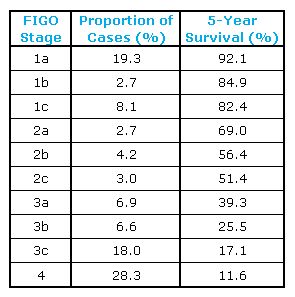This article introduces the importance of cancer statistics in helping improve the survival rate for the disease.
For more detailed statistics, see the article Ovarian Cancer Statistics.
 Every day, people read or hear cancer stats quoted as part of a magazine article, a television show, or a discussion related to some form of cancer. While the figures are educational, are they really worth the time and effort it takes to gather and analyze the data? The fact is that there are several compelling reasons to actively collect and understand these statistics.
Every day, people read or hear cancer stats quoted as part of a magazine article, a television show, or a discussion related to some form of cancer. While the figures are educational, are they really worth the time and effort it takes to gather and analyze the data? The fact is that there are several compelling reasons to actively collect and understand these statistics.
For researchers, cancer statistics are extremely important in terms of convincing others of the need to spend time and money in developing a cure for a given form of cancer. The fact is that all study of various diseases and the creation of medications to alleviate symptoms as well as extend life requires a great deal of money. Statistics help to build a compelling case for the need to study cancer and other health conditions, and use that knowledge to improve the quality of life in any way possible.
Medical professionals also find statistics to be extremely important. The figures often serve as a means of measuring progress in the control of each form of cancer currently identified. For example, when physicians and others are able to compile annual cancer statistics that indicate the ovarian cancer mortality rate in a given geographical area is lower last year than the year before, that helps to indicate the efficacy of some new treatment used within that area.
At the same time, this chance in the ovarian cancer mortality rate in the area may also help healthcare professionals to identify factors relevant to that area that may inhibit the development of this form of cancer, and use that data in further research.
People who are living with a particular form of cancer also obtain benefits from the collection and presentation of statistics. Women can often find some degree of comfort in statistics that indicate a higher Ovarian Cancer Survival Rate today than ten or twenty years ago. Someone suffering with any type of skin cancer for example may take heart in the knowledge that statistics indicate that treatments developed in recent years are increasing the chances of effective treatment and survival.
When an individual has to deal with the reality of cancer in his or her life, knowing that others have been there and many have survived can bring a great deal of comfort.
You can read more about how to improve your Ovarian Cancer Progonsis in this article.
 Far from being useless information, cancer statistics can provide a tangible means of measuring progress, or the lack thereof, when it comes to diagnosing a given form of cancer in time to administer an effective course of treatment.
Far from being useless information, cancer statistics can provide a tangible means of measuring progress, or the lack thereof, when it comes to diagnosing a given form of cancer in time to administer an effective course of treatment.
From this perspective, it is obvious that the practical collection and wise application of these statistics can make a huge difference in easing the pain associated with cancer, as well as possibly saving more lives.
Survival rates for ovarian cancer
Stage at diagnosis is the most important factor determining ovarian cancer survival. This is illustrated in the table below:

As you can see, the 5-year survival rate for patients with stage 4 cancer is very poor. On the other hand, when the cancer is confined to the ovaries (stage 1), the survival rate is more like 80-90%. However, less than 30% of patients are diagnosed in the early stages of the disease (stage 1) (Rosenthal and Jacobs, 1998). This emphasizes the importance of early detection in improving survival rates.